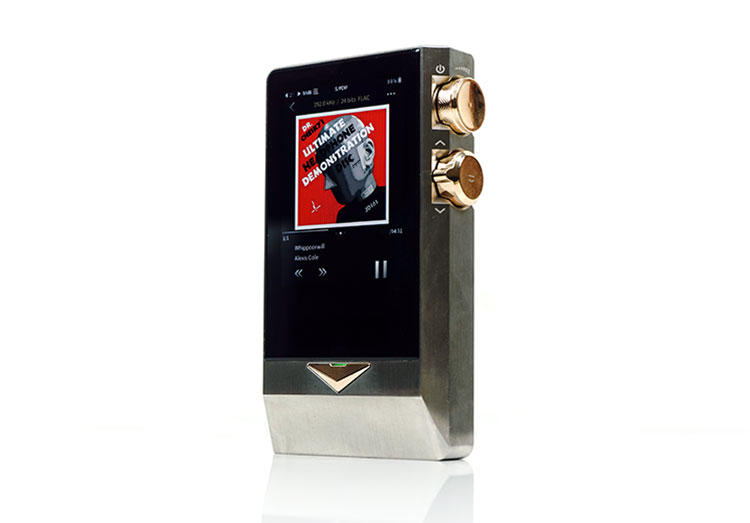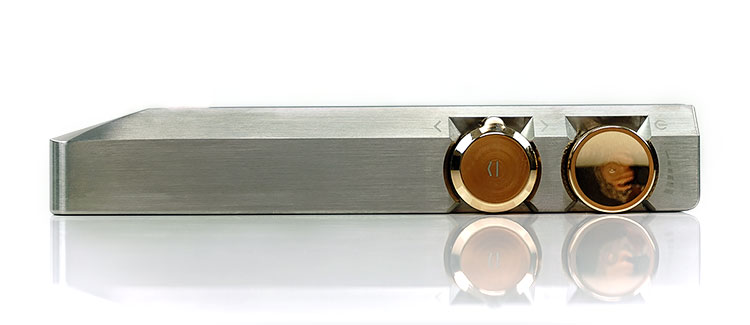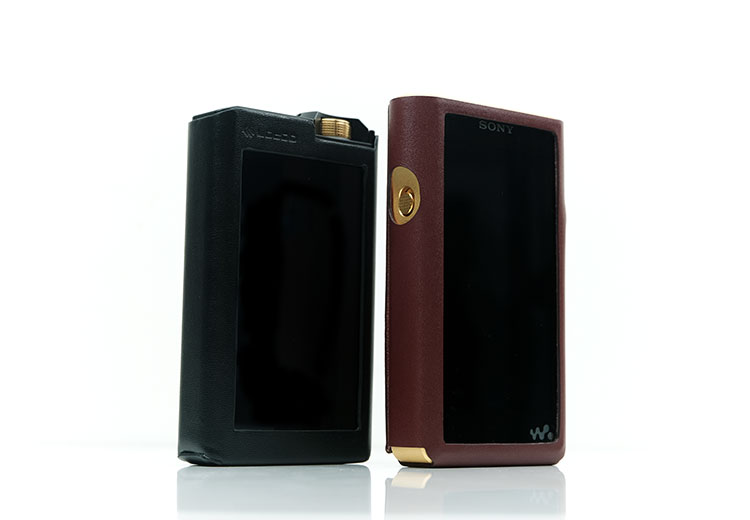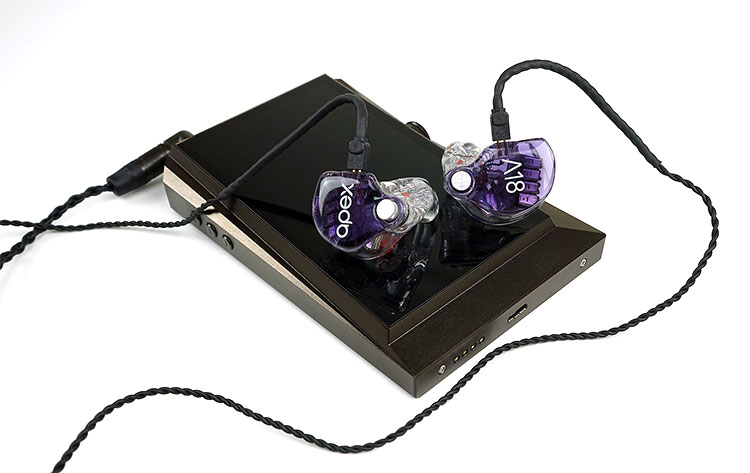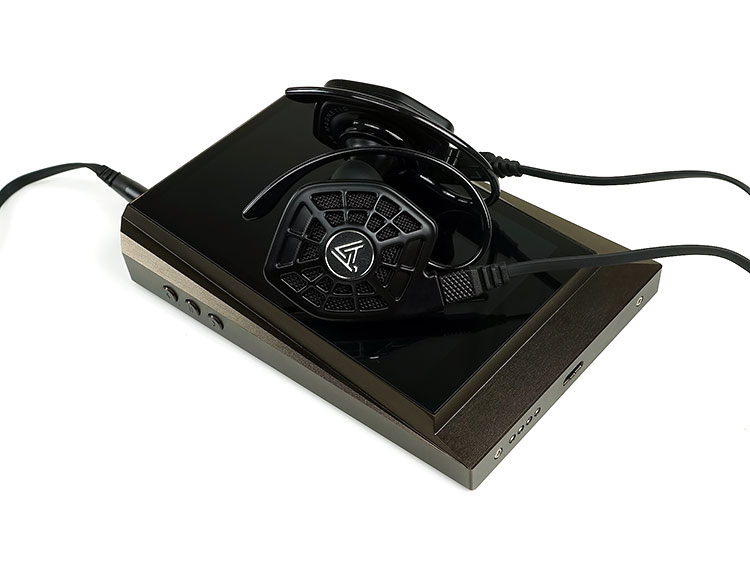Select Comparisons
Cayin N8
$3299
We reviewed the N8 and subsequently awarded it the best DAP of 2018. These two DAPs are like apples and oranges for me with very different audiences though both offer superb audio quality. For me, the N8 is all about the amplification stages and the system integration or matchability.
Amping
The LPGT power ratings are excellent at 480mW balanced for the N8 and 500mW for the LPGT. However, the N8 can tweak that a bit further at 750mW into a 32Ω when on High² mode and has more tweaking for various resistance levels in headphones. It also can go much lower on a 32Ω load at 230mW so quite flexible.
Both have 4.4mm balanced, both have 3.5mm unbalanced with duplex functionality for the line-out. However, the N8 sneaks ahead with its 3.5mm Korg NuTube output which is its calling card.
DAC
At their core, both DAPs use the AKM AK4497EQ chipset for decoding. However, the N8 is dual DAC and the LPGT is single. The N8 is limited to DSD256 using an Ingenics processor. The LPGT uses the Freescale i.MX6 processor and can decode up to DSD512 as well as upsample via an entirely different chipset.
Technical
Both use USB-C though the Cayin’s special wiring of its USB-C port makes it less flexible for universal OTG cables. The LPGT OTG functions just fine on a regular USB-C OTG cable. The N8, however, offers I2S and coaxial outputs making it the more complete desktop system component.
Both have large batteries with the 7000mAh of the N8 the biggest I have yet encountered. Yet both have just okay lifecycles at 9.5 hours max for the N8 and 10 hours for the LPGT. No onboard memory for the LPGT and 128GB for the N8 which I think is a big deal, to be honest.
The N8 has a smaller IPS 3.2″ screen compared to the 3.77″ IPS panel of the LPGT. Both do not use Android, HiBy for the N8 and Lotoo OS for the LPGT. Lotoo OS is by far the faster, the HiBy OS is perhaps the more mature.
The two DAPS can output up to LDAC on BT but the Bluetooth on the N8 is steadier with the better range. Neither have any WiFi features other than OTA.
Build
The LPGT is the sexier of the two DAPs with its matte black aluminum alloy finish and gold accents. The N8 is well built, aesthetically striking but also polarizing. It is also the bigger of the two DAPs by some margin. Both are not lean but the N8 is heavier at 380g compared to 311g for the LPGT.
Performance
Two fairly different signatures, especially if you opt for the tube output of the N8. The LPGT sticks to a slightly drier, neutral-to-natural sound with a linear low-end and slightly more lower treble presence.
The N8 is more weighted on the low end in both solid-state and tube unbalanced. With solid-state, it is a little punchier sounding. With the tube, it is more relaxed but with slightly more body than the LPGT bass performance.
As such, the N8 will sound the deeper of the two for staging whereas I find the LPGT to have a slightly more open sounding upper mids and treble with a little more air and energy.
Timbre on the N8 is a little more full-bodied over the more neutral reference-sounding LPGT. It has a bit more low-end and vocal emphasis and combined with the tube output instrumental notes has a slightly wetter richer sound. The LPGT is cleaner with more instrumental separation and with a lower noise floor that delivers an enhanced perception of micro-detail.
The N8 is the more musical of the two sources with a little more PRaT and rhythm to its signature. The LPGT is more reference-sounding with a greater emphasis on clarity and transparency.
Sony NW -WM1Z
$2999
The WM1Z would be a close competitor in my book to the LPGT with the real differentiation being the audio output in both tone and power.
DAC
Sony has their own design for the DAC compared to the off-the-shelf AK4497EQ of the LPGT. The 1Z, however, will only decode up to DSD256 compared to the DSD512 of the LPGT. The LPGT also has an additional upsampling chip-set advantage.
Amp
Both DAPs use a combination of 4.4mm balanced and 3.5mm unbalanced outputs though there is no official line-out on the Sony. You can jack from the headphone output for line-out according to Sony but I am never 100% sure that is optimal.
The power on the 1Z S-Master HX™ amp is actually not that high which may surprise some. At 16Ω the Sony is capable of just 250mW+250mW balanced and 60mW+60mW unbalanced. Compare that to 500mW into 32Ω unbalanced and balanced on the LPGT and clearly, the Lotoo DAP has a distinct advantage in terms of output power for demanding headphones.
The lower power rating and digital amp design make the 1Z ideal for sub-20Ω IEMs but I am still fairly impressed by how quiet the LPGT is despite its higher power rating.
Software
Both have their own proprietary OS and thematically I think they are quite close in their aesthetic appeal and core navigation.
I would maybe give the Lotoo OS the edge in terms of features but way ahead in terms of speed. Sony is like time froze when it constantly updates a big database upon its slower boot. Lotoo is there in 2-3 seconds which is wonderful.
Both have some nice sound tweaking features with Sony’s DSEE HX, dynamic normalizer, and vinyl processor shaper versus the LPGT’s PMEQ, ATE, XRC, and digital filters.
I have to give the edge here to Lotoo, some of the shaping is dramatic and very useful. I do think the Sony tweaks make it sound more pleasing but it is not quite as essential to the experience.
Media Management
Media management is a bit more mature on Sony than the Lotoo at this time. Features such as release year and genre categories are not on the Lotoo. You can even customize the entire category section with the likes of composer, playlists, and the entire song database so quite flexible for the 1Z.
The ‘Sense Me’ option is also a nice bonus for the Sony media manager. Both have the ability to seek and pick hi-res tracks with the Lotoo one perhaps a little more precise and customizable.
Both have Bluetooth 4.1, both have the capability to receive up to LDAC from another source and both can be paired. The Lotoo, however, can transmit a BT signal whereas the Sony can only receive it. The Lotoo does have WiFi whereas the 1Z does not but it is only for OTA so it is a moot point.
Form Factor
The 1Z is the bigger DAP and by far the heavier at 454g versus 311g. You will feel that difference. Both are engineering magnificently. Yeah, I give the edge here to the 1Z but only just. The Lotoo looks kind of ‘Sony’ish’ and that is a good thing.
Screen
Sony has a bigger but lesser quality TFT screen compared to the 3.7′ IPS panel of the LPGT. The 1Z does seem brighter in comparison to maximum settings. The LPGT could do with a bit more lighting at its highest setting.
Battery/Memory
The battery is the star here for Sony at 15-20+ hours. Often, I do not charge it for days and my go-to for traveling. The Lotoo cannot compete at 10 hours with minimal button poking. Neither can it compete with onboard memory with the Sony at 256Gb and the Lotoo on a big fat zero. Both take cards, the Sony a dual microSD and the LPGT a single SD.
Performance
The 1Z, like the N8, has a punchier low-end than the LPGT’s more linear bass response. It will also sound deeper in terms of staging as a direct consequence. I would also say the 1Z is more full-bodied in its timbre up to the mids, including the vocals, with a bit more even harmonic emphasis than the more neutral-sounding LPGT.
I do, however, find the LPGT to have more width with better superior instrumental separation. The 1Z tends to be a bit softer in its imaging impact. You can hear the detail but it doesn’t quite grab you compared to the LPGT’s more dynamic imaging and spatial cues.
Treble tonally is a bit more digital on the Sony which has always been a bit of a bug-bear for me with synergy. The Ra is a good example where it just sounds very unbalanced for treble timbre being too hot and peaky. The LPGT has more treble presence but it is more balanced and coherent for me and slightly the airier of the two also.
Astell & Kern AK380
$2499
Design
Going back a year, (2015) on the 1Z, AK launched the AK380. At the time nothing came close in terms of build quality and the tonality won over quite a few high-end fans including me.
For those who didn’t enjoy the cleaner neutral sound of the AK240, the AK380 seemed the perfectly smoother antidote. Priced similarly to the LPGT back then, the base model can still be bought at a discounted level from AK.
Build
The AK380 is much smaller than the LPGT and weighs in at just 230g making it the more pocketable of the two. The screen is also a little bit bigger at 4″ (WVGA) compared to 3.7” of the LPGT but the IPS panel on the LPGT is a bit nicer to look at.
Both have slightly below-average maximum brightness levels. Both have a fairly fluid touchscreen and are fairly responsive though I find the Lotoo OS much faster to navigate than the skinned Android of the AK380.
Wireless
The AK380 has been expanded a little over the years to have a far more useful WiFi function with TIDAL integration as well as OTA features. The LPGT at the moment only has OTA. BT is 4.0 on the AK380 and maxed out at aptX-HD. A bit out of date compared to the LDAC-capable bi-directional 4.1 of the LPGT.
Technical
Decoding on both has a gap with the Lotoo using a more up-to-date flagship AK4497EQ and the AK3870 on a dual AK4490. The AK for PCM at 32BIT/384kHz and DSD256 compared to the far superior DSD512 and 786kHz PCM of the LPGT.
The BT functionality is also a bit behind the N8 with an aptX-HD maximum and no LDAC. NO aptX-HD on the N8 but with LDAC that point is moot. WiFi and expansion on the AK380 OS are a little bit better with OTA and TIDAL access on the go.
Connectivity
With regards to connectivity and amplification, the LPGT is a little ahead of the AK380 but not as jam-packed as the N8. Granted you can buy lots of interesting accessories to enable a wider system component feature on the AK380 but at a considerable cost ($600 approx. for the dock).
You do get a digital edge as of now with an optical out as well as OTG with the AK380. However, the analog edge and power are with the more modern 4.4mm balanced PO/LO of the LPGT.
I also prefer the OTG and USB-DAC sound tweaking on the LPGT though the sampling rate seems stuck at PCM 192kHz 32BIT for all tracks. I see that the USB-DAC is a beta release so maybe this will change in time.
Performance
The AK380 is a smooth-sounding presentation with a great black background but it does not have the dynamic range or width of the LPGT, especially when you flick on the XRC option. The bass is warm and a little soft on the AK380 compared to the punchier and more dynamic-sounding LPGT low-end.
Mids are a little more centered sounding with good detail on the AK380 but it is not as open sounding nor as expansive as the LPGT mids. Spatial cues resonate with a little softness and extreme left and right cues can be less involved.
Treble on the LPGT is just a little more involving with a touch more energy. This affects the timbre a bit for me with the AK380 the slightly darker of the two. Combine that with enhanced texture and detail, particularly in vocals and the LPGT is certainly the more vivid sounding of the two presentations.
Our Verdict
Lotoo has been clever with the Paw Gold Touch. There is enough new and legacy old to bring out a very competitive media player without completely ditching what worked for them on the old PAW Gold.
This is a thoroughly modern reference-sounding flagship DAP now. The level of engineering and build quality is ‘international level’ and would not look out of place beside a Sony or AK. The OS is super-fast with a ton of genuinely useful and fun sound tweaking features.
Yes, there are some bugs still to be ironed out in the OS media manager. The Bluetooth and USB-DAC functionality need to be fleshed out a bit more in terms of strength and sampling flexibility. The quirky similar specs for balanced and unbalanced output might lose them marketing brownie points.
The lack of onboard memory also feels like a missed opportunity. Yet, even still, this is my go-to DAP right now. It feels just right for my personal preferences for a portable reference player.
The combination of tech and sound tweaking is dangerously addictive. More importantly than that it’s almost perfect for sensitive monitors with its transparent, hyper-detailed reference sound signature.
Previous PAW Gold users should feel safe in upgrading and leaving the older unit behind. New users will have a distinct choice at the top table now between the musical Cayin N8 amp king, the highly connected AK1000, Sony’s gold flagship, and the very reference-sounding Lotoo Paw Gold Touch. First world problems man!
Lotoo PAW Gold Touch Specifications
Body
- Dimensions: 119mm x 68.6mm x 21mm
- Weight: 311g
Screen
- Touchscreen
- Size: 3.77″ IPS Display
- Resolution: 800 x 480
- Gorilla Glass (Std 5)
- DLC Coating for Added Strength
- AF (Anti-Fingerprint) Coating
Battery
- Playback Time: 10+ Hrs
- Capacity: 5500 mAH
USB
- USB-C with up to USB 3.1 protocol
- USB-DAC Functionality
- USB Charging
Wireless
- Bluetooth 4.1 with LDAC support
- WiFi b/g/n (Purpose Still Unknown)
Memory
- SD Card
- Support Up to 2TB UHS-II
Software
- Lotoo OS (Not Android or Linux)
- PMEQ II with 5 Filters Per Setting
- ATE
Audio
- DAC Chip: AKM 4497EQ
- Support up to PCM 768kHz and DSD512
- Headphone Out – 4.4mm Balanced & 3.5mm Single Ended
- Line Out – 4.4mm
- Output Power: 500 mW per Channel at 32 Ohms
4.4mm Balanced Headphone Out
- Frequency Response: 20 – 20,000 kHz (+0.008/-0.34 dB)
- THD+N: 0.00015%
- SNR: 127 dB
- Channel Separation: -126 dB
- Dynamic Range: 127 dB
- High Gain: +14.4 dBu
- Low Gain: -5.6 dBu
4.4mm Line Out
- Frequency Response: 20 – 20,000 kHz (+0.008/-0.34 dB)
- THD+N: 0.00015%
- SNR: 127 dB
- Channel Separation: -126 dB
- Dynamic Range: 127 dB
- Gain: +14.4 dBu
3.5mm Single-Ended Headphone Out
- Frequency Response: 20 – 20,000 kHz (+0.006/-0.38 dB)
- THD+N: 0.00045%
- SNR: 123 dB
- Channel Separation: Unknown
- Dynamic Range: 123 dB
- High Gain: +14.4 dBu
- Low Gain: -5.6 dBu
3.5mm Line-Out
- Frequency Response: +0.006/-0.38 dB (20~20kHz)
- Dynamic Range: 126dB@1kHz (20~20kHz, A-weighted)
- THD+N: 0.00020%@1kHz (20~20kHz, A-weighted)
- Output level: +14.4 dBu





